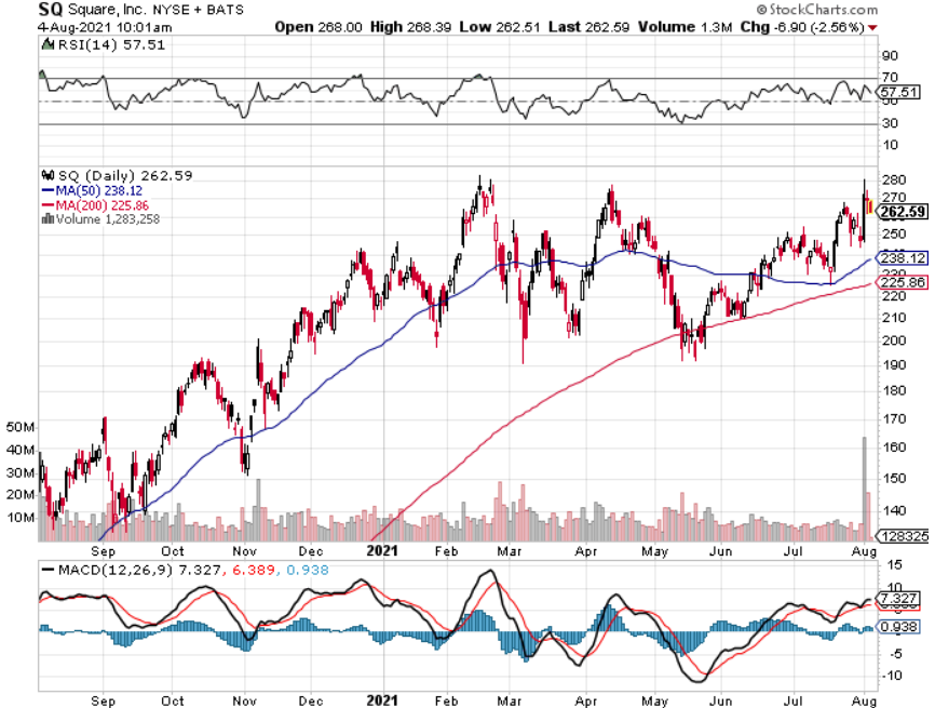This guy leading Square, Jack Dorsey, has accomplished some phenomenal things during his tenure in San Francisco.
But with the fast-moving tech sector, he’s venturing into uncharted territory as his outfit purchased Australian buy now, pay later provider Afterpay (AFTPY) for $29 billion in stock.
This is the largest buy-out done by Dorsey signaling a large wager on Square’s ability to catch up with more established retail banks.
Afterpay offers its 16 million users a way to get their purchases right away and pay for it in four regular, interest-free installments.
What a great deal for the poorer Millennial generation!
This is just another tool that Square will be able to integrate on its interface as another way to pull in more users and capital.
It’s almost a credit card proxy.
If payments are missed, Afterpay levies a fee and locks their accounts.
These late-payment penalties, along with fees paid by merchants, form the main sources of revenue for Afterpay. The system is popular among young shoppers who make up the bulk of bad credit scores.
Square’s popular Cash app gets another notch in its belt as it competes with Affirm and Klarna.
A secret meeting in Hawaii consummated the deal with executives reasoning that speed is paramount - banks and new entrants are aiming for a bigger piece of the buy now, and pay later services.
These offerings have boomed in the past year, as homebound consumers used them to borrow and spend online during the coronavirus pandemic.
There are reports that Apple is in the process of building a buy now, pay later feature in coordination with Goldman Sachs.
These services usually mean up to a few thousand dollars, which can be paid off interest-free.
That means such providers are not required to run background checks on new accounts, unlike credit card companies, and normally request just an applicant's name, address, and birth date. Critics say that makes the system an easier fraud target.
Executives at Square and Afterpay shared a desire to expand access to customers globally and saw combining forces as the best way to take on competitors.
Ultimately, Square has been slowly morphing into a bank, and this acquisition accelerates the process.
Square’s banking ambitions were already becoming very clear on the merchant-facing side of its business.
The company first applied for a banking license in 2017, and last year, it received conditional approval from the Federal Deposit Insurance Corporation (FDIC).
The new bank, called Square Financial Services and based in Utah, was structured as a subsidiary of Square and started offering small business loans this past March.
Even before Square Financial Services went into operation in March, Square had been giving merchants small loans, using its detailed knowledge of transaction volumes to help approve applications quickly.
These loans, though, were disbursed through a partnership with another existing bank in a 10-K filing, Square revealed it collected on these loans by automatically deducting a fixed percentage of every card payment a merchant accepted.
In this way, Square had disbursed nearly $9 billion in loans before its small business loan and banking functions came online.
Square is diligently using its vast technology infrastructure build-out to maneuver into financial services.
They have been ahead of the curve in rolling out cutting-edge services such as its crypto offerings.
Retail banks will have a hard time competing with Square since they aren’t technology companies that think of challenges in terms of the technicalities of delivering a digital experience.
The problem with retail banking now is that the people who lead them are still bankers and not digitalists in a technology-first world.
Unsurprisingly, Square’s stock cheered the news and was up 10% on the news.
This move also continues the momentum of Square massively overperforming as a stock, management team, and business model in the past 18 months.
I have been highly bullish Square ever since the inception of the Mad Hedge Technology letter and the company has only validated my calls for outperformance.
The stock is somewhat volatile and prone to 5-7% pullbacks and I do believe those are precious opportunities to wade into Square with dollar cost averaging.
After pulling back to $200 in May, the strong lurch up to $270 needs time to digest, and readers just need to wait for the next consolidation.


